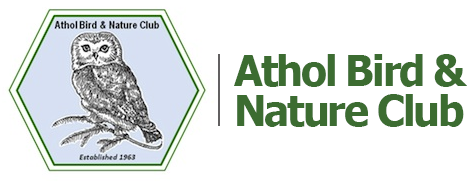October 30, 1999
Nineteen members and friends of the Athol Bird and Nature Club joined Club President Dave Small for a daylong exploration of the New Salem Section of the MDC Quabbin Watershed.
Entering Gate 29 off Route 202 the group immediately noted the harvest of White Pine adjacent to the access road. This harvesting operation by King-Chaffee Logging is part of the MDC Watershed Management program. This particular operation is interesting in the highly technical nature of the equipment being used. The mechanical harvesting equipment includes a track mounted “Feller-processor” that cuts and processes individual trees and prepares them for transport by the “Log Forwarder” another specialized machine which picks up the processed wood and delivers it to a landing. The wood is sorted and loaded onto trucks where it is transported to sawmills. The specialized state of the art equipment used in this operation enables the contractors to harvest forest products with minimal disturbance to the remaining forest and protection of the soils over which they must pass.
A Barred Owl passed between the vehicles allowing a thrilling look for the last cars in the caravan. A pair of Hermit Thrushes were noted by the lead cars as the group made the first stop at the waters edge. The morning sun warmed the autumn air and mist rose from calm water reflecting the warm colors of the fading fall foliage. Common Ravens croaked from the nearby hillsides as Hooded Mergansers, Mallard Ducks and Herring Gulls moved back and forth across the Moosehorn Brook Cove. At another vantage point, Belted Kingfisher, Great Blue Heron, and a flock of over 50 Hooded Mergansers were noted by the group, as a Ruffed Grouse could be heard drumming in the nearby forest.
Exploring the shoreline near at the mouth of Hop Brook near Gate 22, members had great looks at Common Loons, Common Mergansers and Horned Grebes on the calm waters of the reservoir. The tracks of White tailed Deer and fox were noted, and a late season Variegated Fritillary Butterfly was observed sunning itself in the shoreline mud. A Common Raven Perched high on the hillside in an bare hardwood tree serenading the group with a series of raucous croaks and caws. Also observed along the shore were Hairy Wood pecker, Downy Woodpecker, Cardinal, Blue Jays, White-breasted Nuthatch, Black-capped Chickadee, Tufted Titmouse, Golden-crowned Kinglet, Dark-eyed Junco, Robin, Song Sparrow, Lincoln’s Sparrow, White-throated Sparrow, and Yellow-rumped Warbler. Several Witch Hazel shrubs in full bloom were admired by the group.
Entering the Prescott Peninsula, off limits to the general public without a special permit, more ravens were heard and seen while a mob of over 50 crows headed south along the ridge. Signs of recent beaver activities and evidence that beaver had the upper hand in plugging the access road culvert inspired a spirited discussion of beaver management. A look into the waters edge by the plugged culvert a Red-spotted Newt was spotted. This is one animal which seemed to enjoy the beavers engineering.
Lunch was enjoyed on the bank of Lily Pond, a picturesque kettle pond surrounded by a bog mat which reminded folks of a northern Maine wetland. Belted kingfisher and Hooded Mergansers entertained as a Painted Turtle, Ruby Meadowhawk and Common Green Darner (dragonflies) made appearances. An Northern Shrike was observed by the some group members. This interesting bird of the coniferous forests of Canada and Alaska is an uncommon winter visitor to the New England area. The Shrikes are nicknamed “Butcher Birds” for their habit of killing insects and small birds, impaling them on the long thorns of the Hawthorn Shrub.
Traveling deeper into Prescott a pit stop at the Five College Radio Astronomy Observatory was made where Yellow-rumped Warblers and Juncos fed in the shrubbery around the large white dome of the observatory.
A final look at the reservoir shoreline was made at the mouth of Prescott Brook. 3 Pileated Wood peckers were pushed ahead of the group as we navigated the narrow dirt road through the valley. A large flock of Robins and a Northern Flicker were noted. Prescott Brook is the site of the former Eagle Hacking program. There is little evidence remaining of man’s involvement in the program but the sight a majestic adult bald eagle along the distant shoreline reminded all of us how successful the reintroduction program is. Common Loons, Horned Grebes a Northern Cardinal and a glorious sunshine filled fall afternoon concluded our exploration.
The next event of the club will be 7:00 PM Wednesday November 17th at Harvard Forest Fisher Museum. Wildlife Biologist Tom Maier from the U.S. Forest Service, N.E. Forest Experiment Station at University of Massachusetts will present a program on “Mice and Birds”. The program is open to the public.
